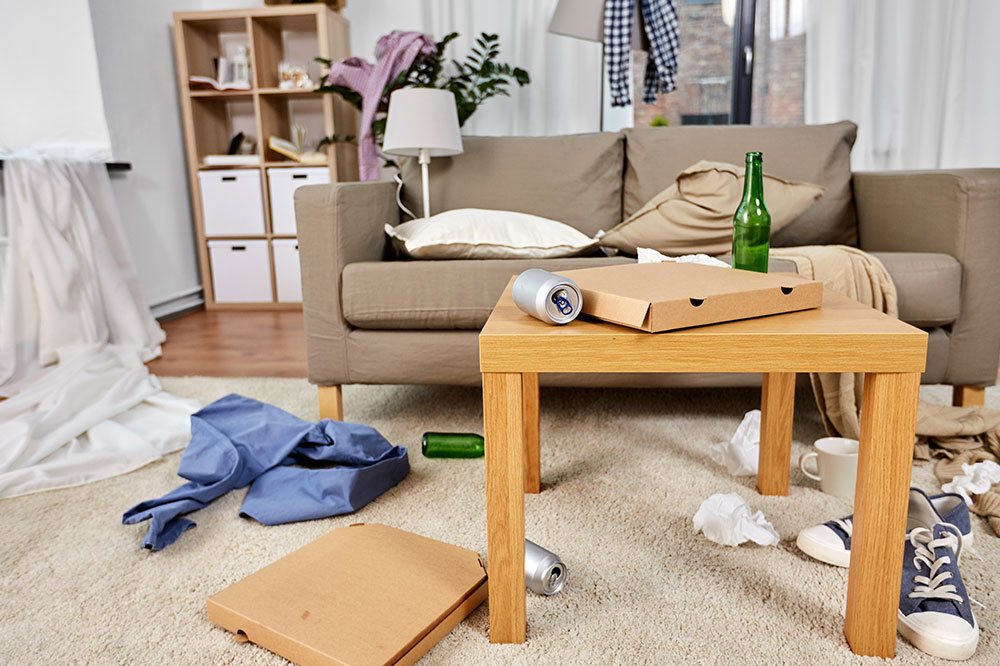7 household items that can cause cancer

Due to its incurable and terminal nature, cancer scares the living daylights out of everyone. People do their best to stay away from things that may cause them to develop cancers of any kind. There are many well-known carcinogens that healthy people actively avoid, such as soot, certain types of radiation, and cholesterol-heavy foods. However, there are many elements within one’s own house that can be carcinogenic in nature. Some such household items are:
Room spray
Formaldehyde is one of the most dangerous carcinogens out there. Room sprays contain this chemical, but most of them do not mention it in their ingredients list column. This is mainly because these sprays contain preservatives and chemicals that are scientifically termed “formaldehyde-releasers.” So, when these chemicals are inserted into a formula, they undergo a series of reactions and release the dreaded carcinogen. Apart from room sprays, one will find formaldehyde in face care and body care based makeup products.
If possible, one can seek and purchase formaldehyde-free products and non-toxic room sprays to keep their house smelling sweet even without the cancer-causing element.
Perfumes
Just like formaldehyde, styrene is another chemical that can eventually cause cancer in people if they are exposed frequently to it. Fragrances are the most common products that contain styrene as one of its main elements. However, like formaldehyde, perfume manufacturers do not list this chemical in the ingredients of their products. This happens because perfumes contain hundreds of naturally occurring and artificial chemicals. However, IFRA (the International Fragrance Association, a global representative body of the fragrance industry) lists all the ingredients of the products their member fragrances use, and styrene makes nearly all those lists.
To sidestep this problem, consumers can again purchase non-toxic perfumes that contain only organic elements.
Insect repellents
Nearly everyone has some or the other kinds of insects residing in their houses. To keep these insects at bay, people commonly use insecticides and repellents. The toxic and deadly nature of insecticides and repellents is well known, which is why people wash their hands after using these products. This helps prevent the deadly chemical from entering their mouths. However, insecticides are much more dangerous than most people know. Insect repellent sprays contain many carcinogenic chemicals such as carbamate, organophosphate, and organochlorine as active ingredients. These components are effective in eradicating insects and pests from one’s house, but they also hold the capacity to cause lung cancer if inhaled in the long term.
Apart from that, exposure to insecticidal sprays can also cause central nervous issues in people. So, it is not uncommon for people who inhale these sprays inadvertently to suffer from problems related to their brain, spinal column, and nerves, the three main components of the nervous system.
Due to these reasons, one needs to purchase organic insect repellents and ones that do not contain any heavy chemicals, if possible.
Some types of scented candles
As the header says, not all scented candles are toxic, but many commercially-sold candles, unfortunately, fall into that bracket. To cut their production expenses, many candle manufacturers do not think twice before using cheap but effective manufacturing chemicals such as petroleum, paraffin, and perfumes while producing scented candles. Unfortunately, these chemicals give out fumes while burning. These fumes are not much different from the exhaust fumes that come out of a car when being driven. As almost everyone knows, the fumes coming out of a car’s exhaust pipe are highly toxic and carcinogenic in nature.
Crispy, brown foods
While foods do not necessarily fulfill the criteria of home-based items, they are technically a part of the perishable things one will find in their house. Brown foods include, among others, eatables that contain potatoes. When one heats potatoes to high temperatures, the vegetables burn and emit a chemical named acrylamide. Several research studies have found that test animals that were given this chemical through drinking water or air have gone on to develop and succumb to cancer in the long run.
To cut down on the amount of brown foods one consumes, one can eat foods that are roasted, fried, or baked until they have a natural tan color. In this way, they will not compromise on taste and keep themselves relatively safe from developing cancer.
Cushioned furniture
Soft, cuddly furniture that contains cushions is often layered with a chemical known as TDCIPP. Many kinds of mattresses, sofas, and chairs that contain foam of any kind often need this flame retardant to become perfect for purchase. Unfortunately, this chemical is a major carcinogen, and it can lead to people developing lifelong malignancies if they come into regular contact with it. In fact, research studies found that live test subjects with this chemical in their blood are likely to have some or the other kinds of tumors in their body. What’s more, TDCIPP is also a chemical that is commonly found in household dust.
Thankfully, this is a problem that can be dealt with just as easily. People can simply replace all the cushioned furniture purchased prior to 2013 with new ones. This works because, after 2013, manufacturers have been asked to stop using this flame retardant while making their products. This means that more recent furniture purchases have a lower risk of giving people cancer.
Arsenic-infused drinking water
Now, most people get water that is free of chemicals and harmful toxins. However, many zones across the country still have people extensively using groundwater to fulfill their daily work, including washing utensils, drinking, and bathing. Due to extensive industrialization and soil pollution, groundwater is often mixed with heavy doses of arsenic. This chemical causes cancer if people are exposed to it for even a short amount of time. To counter this problem, people must stop the intake of polluted groundwater and use the water processed and sent to their homes through the tap.
Apart from these elements, some other household items that may cause cancer are hand sanitizers, carpets, and fabric softeners.
















